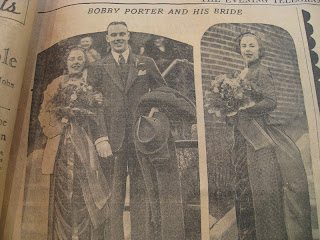This week in the studio, we had a hands-on lesson in formal portrait lighting. Formal, in-studio portraiture, is not where my photography passion lies, but I think it's always interesting and valuable to learn new skills, especially ones that take me out of my comfort zone.
I took some behind-the-scenes photos this week, to give you an idea of what a night in class is like. For all our classes so far, we have been using classmates as models, and we've all been taking turns.
How awkward is that? Very.
We have only been together a few weeks now, and everyone is still a bit nervous about asking the sitter to move this way or that way. Also, seeing your face projected on a giant screen for editing during lab-week class is cringe-worthy at best, and humiliating at worst! Imagine for a second, having 20 people focussed on a close up image of your face while a professor instructs the class on 'lighting techniques to lessen skin imperfections' or posing techniques to 'hide nostril hairs'. (Note to self: don't forget under-eye concealor and lipgloss for tomorrow's class).
But I digress....portrait lighting....yes. This week we worked on 4-light portraits.
- The 'key light' or 'main light' is the most powerful/bright/direct light. The main purpose of this light is to create 3 dimensionality in the photo, by making shadows across the face. For this exercise our key light was placed at about a 45 degree angle to our model's left, slightly above their eye level.
- The 'fill light' was placed directly in front of our model, higher than the key light. The fill light had a diffuser placed over it, and was about twice the distance from the model as the key light. The function of the fill light is to 'fill in' some of the shadows created by the key light, and softening the overall result.
- The 'background light', is just that. It's a small, low light, placed on the floor and pointing up at the background. The background light is used to create distance/separation between the model and the background. If it's placed properly it should create a subtle highlight on the model's shoulders.
- The last light is the 'hair light'. Guess what it's for? You guessed it! to provide a bit of sparkle and interest to the model's hair. Our teacher suggested this may not be the best idea if you happen to be shooting a 'follicly challenged' individual. In this case the hair light was placed above the background and pointed toward the model's hair.
For our assignment, we need to submit 2 portraits from the 4-light lesson. 1 with "broad lighting"-the main light is illuminating the side of the face that is turned toward the camera, and 1 with "short lighting"-the main light is illuminating the side of the face that is turned away from the camera. Both images are to be submitted as-is, i.e. no editing in any way.
Here are my shots.
 |
| Jason. (Sometimes awkwardness leads to silliness) |
 |
| Walter |
We had some time at the end of class, and our professor decided to give us a tour of the rest of the studio and some of the fancy stuff, that the full-time photography students get to play with.
 |
| 'Glamour Lighting' set-up |
 |
| what a reflector does, and how to make the most of it |
Since we all had a chance to shoot with the glamour set-up we were asked to submit an image for our assignment as well.
 |
| Ivanka |
Glamour Lighting: f 5.6, shutter speed 1/60, ISO 400, Focal length 120mm, lens Nikkor 18-200mm
There you have it, Assignment #5!












































